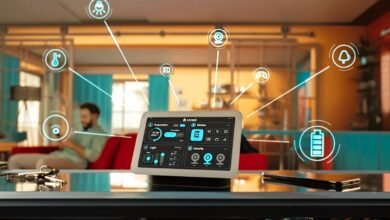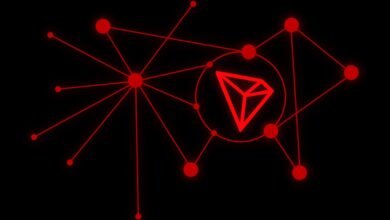Top 10 Ideas for Advancing the Technology Sector

Do you know Top 10 Ideas for Advancing the Technology Sector? The technological sector is always developing, and 2023 is expected to offer even more revolutionary developments. The technological world is expanding daily and is growing more diversified and fascinating, from artificial intelligence to quantum computing. The top 10 breakthroughs advancing the technology sector and influencing our future are examined in this article. These advancements, which range from ground-breaking hardware to game-changing software, are anticipated to have the biggest effects on the tech industry in 2023 and beyond.
Read More: Pakistan Exported Technological Services for $1.3 Billion
Artificial Intelligence
Developing computer systems that can recognise patterns, make decisions, and solve problems—tasks that traditionally require human intelligence—is the focus of the rapidly expanding subject of artificial intelligence (AI). AI can be divided into two primary categories: narrow AI, which is created to carry out a single task, and general AI, which is capable of carrying out any intellectual task that a human can.
The exponential expansion of data, which gives AI systems the information they need to learn and advance, is one of the major forces behind the technology. The growing computer power, which enables AI systems to process bigger and more complicated data sets, is another crucial element.
AI has the potential to have a significant positive impact on a variety of areas, including manufacturing, banking, and healthcare. AI, for instance, may identify illnesses and create individualised treatment programmes in the healthcare industry. In the financial industry, AI can spot fraud and enhance investing choices.
The necessity for high-quality data, the complexity of developing and testing AI systems, and the potential ethical and societal repercussions of AI, such as job displacement and biassed decision-making, are all obstacles that AI must overcome.
Advanced robotics
The creation of robots that can carry out tasks that were previously only humanly possible is referred to as advanced robotics. These robots have cutting-edge sensors and algorithms at their disposal, enabling them to detect their environments, make choices, and interact with their surroundings.
The demand for automation in sectors like manufacturing and healthcare is one of several factors influencing the advancement of advanced robots. As a result, sophisticated robots are employed in a variety of settings, including manufacturing, assembly, healthcare, and education. Advanced robots, for instance, are employed in manufacturing to boost efficiency and cut costs, while in healthcare, they are utilised for surgical treatments and rehabilitation.
To realise its full potential, advanced robotics must first overcome a number of obstacles. They include the necessity for trustworthy and safe technology, thorough regulations, and the approval and trust of the general population.
Augmented Reality
The technology known as augmented reality (AR) improves our experience of the real world by overlaying digital data on it. Unlike virtual reality (VR), which totally simulates the environment, augmented reality (AR) incorporates digital components into our physical surroundings. Although augmented reality technology has been around for a while, it has just lately become quite popular as a result of improvements in mobile technology and computer capacity.
A wide number of businesses, including retail, real estate, and healthcare, use augmented reality to improve and streamline operations. These industries include gaming and education. For instance, the usage of augmented reality (AR) in the retail industry enables customers to visually try on clothing or visualise how furniture would look in their homes before making a purchase, resulting in engaging shopping experiences. Virtual tours of properties are created through AR in the real estate sector to help prospective purchasers have a better sense of the location before committing. Finally, the usage of augmented reality in the healthcare industry is minimising the need for costly and time-consuming physical simulators by providing interactive training for medical procedures and surgeries.
Augmented reality will be more prevalent and immersive by 2023. Customers will be able to access immersive mixed-reality experiences through smartphones and other devices. Medical practitioners will also utilise nanodevice and implantable technology for surgical operations as well as rehabilitation following illness or injury.
Autonomous vehicle
Autonomous vehicles, commonly referred to as self-driving automobiles, have the ability to sense their surroundings and navigate on their own. When compared to conventional vehicles, this technology has the potential to alter the way we travel by providing superior levels of safety, convenience, and efficiency.
Cameras, ladar, and radar are just a few of the sensors that autonomous vehicles utilise to sense their environment and make choices. Additionally, they have powerful software algorithms that enable them to instantly evaluate the information provided by these sensors and take action.
The demand for safer, more convenient, and more effective transportation, technological advancements, and the availability of more advanced and trustworthy sensors and algorithms are some of the elements that are driving the development of autonomous vehicles.
Before driverless vehicles are extensively used, a number of obstacles must be removed. They include the necessity for trustworthy and safe technology, thorough regulations, and the approval and trust of the general population.
Virtual reality
A computer-generated simulation of a three-dimensional environment called virtual reality (VR) allows users to interact in ways that seem real or natural. In order to experience a 360-degree immersive environment, it usually needs utilising a headset or other equipment that tracks the user’s head and hand motions.
From gaming and entertainment to healthcare and education, VR has the potential to alter a wide range of industries. For instance, compared to conventional console or PC gaming, VR delivers a more immersive and participatory gaming experience. VR can be utilized in the healthcare industry for training, simulations, and the treatment of ailments including phobias and anxiety. VR can produce interactive and interesting learning environments in the classroom.
VR has great potential, but it is still in its early phases and faces many obstacles before it can be fully utilized. One of the major obstacles is the high price of VR hardware, which may prevent many people from utilizing it. Another issue is the dearth of VR material, which can make it challenging for users to locate worthwhile and intriguing experiences.
Augmented reality glasses
Wearable technology called augmented reality (AR) glasses allows users to superimpose digital data over the physical world. Users using AR glasses can view augmented reality in a hands-free, heads-up display style, as opposed to standard AR, which depends on a smartphone or tablet screen. The user’s capacity to interact with digital information while immersed in the real environment is improved as a result.
There are several possible uses for augmented reality glasses, including those in manufacturing, education, and even the industrial sectors for maintenance, repair, and manufacturing. For instance, augmented reality (AR) glasses can provide a new degree of immersion in the gaming sector, enabling gamers to have more engaging and participatory game experiences. The use of augmented reality (AR) glasses in the classroom has the potential to completely change how we learn by making the process more participatory and fun. AR glasses can give workers in the production, repair, and maintenance sectors real-time information and instructions, increasing productivity and lowering the risk of errors. The requirement for a potent processing engine and a sizable battery to power the gadget are two drawbacks of AR glasses. A lot of high-end types of AR glasses might cost several thousand dollars, which adds to their cost. Also, the power requirements for AR glasses are frequently high, which reduces battery life.
Biometric data capture and identification

A system known as “biometric data capture and identification” identifies people by their physical or behavioral traits. It might involve voice recognition, fingerprints, facial identification, iris scans, facial analysis, or even signature analysis. In comparison to conventional means of identification like passwords or PINs, using biometric data offers a solution that is both more convenient and safe.
Increased security is one of the main advantages of biometric data collection and identification. Because biometric information is specific to each person, it is significantly more difficult to forge or duplicate than traditional identification documents. Furthermore, biometric information is not easily forgotten, negating the need for users to memories numerous PINs or passwords. This makes it a desirable alternative for financial institutions, governments, and other organizations managing sensitive information because it can lower the risk of identity theft and fraud.
Cloud Computing
The term “cloud computing” describes the delivery of resources and services, such as servers, storage, databases, and applications, through the internet. Without spending money on pricey infrastructure and technology, it enables consumers to access these resources and services whenever they need them. The benefit of cloud computing is scalability. It implies that consumers don’t need to worry about the price and time involved in buying and installing new hardware because they can easily and quickly scale up or down their computing resources as needed.
The accessibility of cloud computing is another advantage. Cloud computing makes it simpler for businesses to cooperate and for individuals to work remotely because users can access their data and applications from any location with an internet connection. Cloud computing services come in a variety of forms, such as Infrastructure as a Service (IaaS), Platform as a Service (PaaS), and Software as a Service (SaaS) (SaaS). Users can select the level of service that best suits their needs from among the various levels of control and customization offered by each type of service.
Cloud computing has a number of advantages, but it also has some drawbacks. They include worries about security and privacy, dependable internet connectivity, and the possibility of vendor lock-in.
Machine learning and data analysis systems
Systems for data analysis and machine learning are used to analyze and predict outcomes from enormous data collections. These systems can be used for a variety of purposes, such as marketing, fraud detection, and predictive maintenance, by using algorithms and statistical models to find patterns and relationships in data.
The ability of machine learning and data analysis systems to manage massive volumes of data and make predictions in real time is one of its main advantages. Organizations are able to enhance their processes, make better decisions, and gain a competitive advantage as a result.
These systems’ capacity to learn and adjust over time is another advantage. The algorithms and models that these systems use can be enhanced and adjusted as additional data is processed and analyzed, producing predictions and insights that are even more precise.
Yet, there are several difficulties with systems for data analysis and machine learning. The requirement for accurate and high-quality data, the danger of biased algorithms, and the necessity for strong data governance and security are a few of these.
Read More: How to Build Blockchain Android Apps
Blockchain
A decentralized, secure, and transparent method of keeping track of transactions and storing data is blockchain technology. It was initially developed as the underpinning technology for Bitcoin but has since been modified for use in a variety of sectors, including supply chain management and finance.
The capacity of blockchain technology to offer a tamper-proof and unchangeable record of transactions is one of its main advantages. It is accomplished by distributing data throughout a network of computers, or “nodes,” and using cryptography. It is very difficult for any one node to change the data because every node has a copy of the full blockchain and new transactions are confirmed and logged by several nodes.
Decentralization is the second key factor. A blockchain system gives each member equal access to and control over the data, in contrast to traditional centralized systems where data is held and managed by a single body. As a result, unlike traditional centralized systems, it makes it considerably more difficult for one person to influence the system and offers security and transparency.
Conclusion
In conclusion, significant changes will be coming to the IT sector in 2023. The technological advancements covered in this article are simply a preview of what will be available in the upcoming years. These technologies have the potential to alter the way we live, work, and interact with one another as they develop and become more commonly used. The ability of AI, the practicality of quantum computing, or the quickness and effectiveness of 5G networks are just a few of the advancements that are poised to change the world in ways we can only begin to fathom.












One Comment